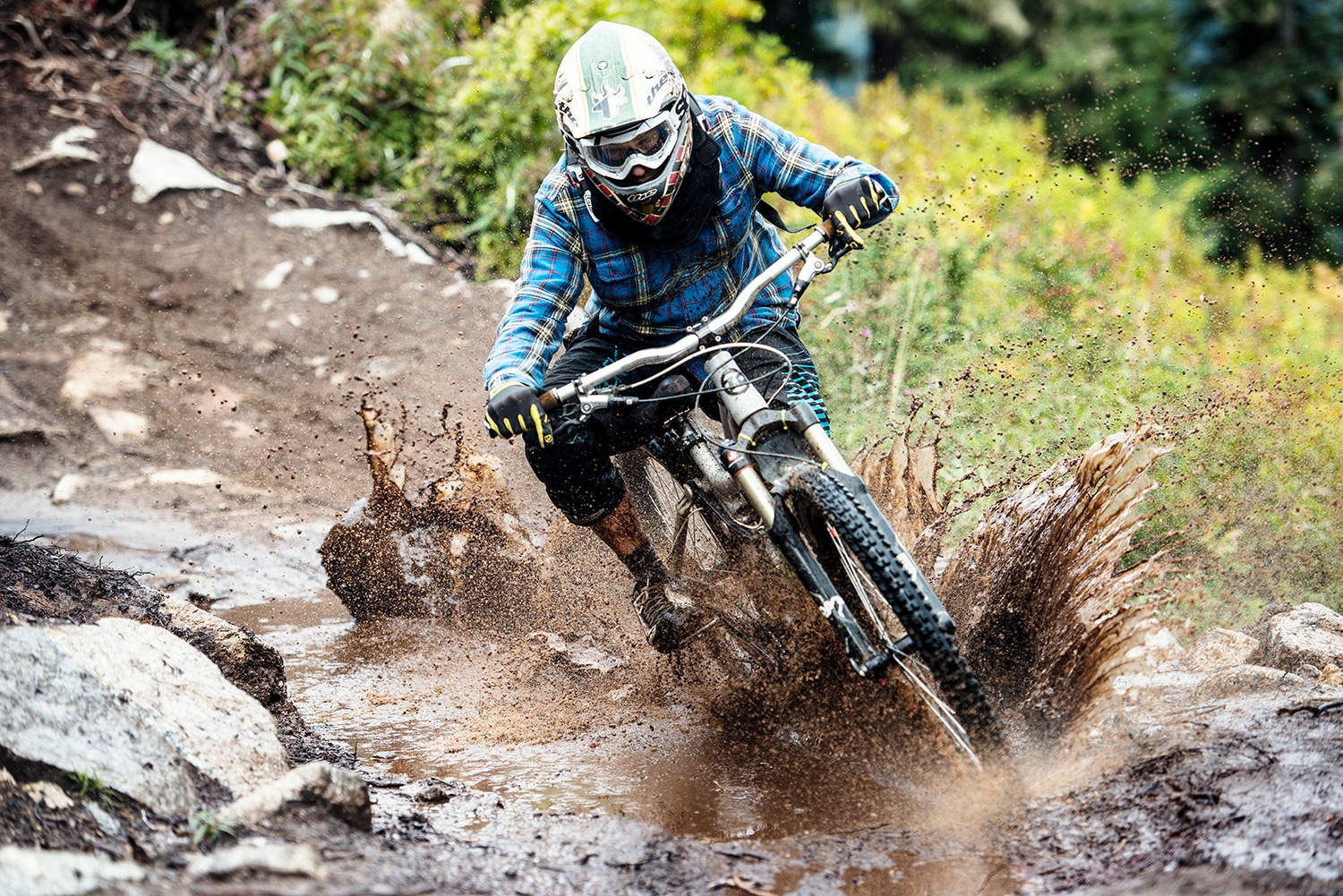When I’ve forgotten my camera gear in the backcountry, a transporter to beam me home is one option that comes to mind. A better solution: Before I leave the house, I take a photo. Three things are confirmed: I have a battery, memory card and camera. No need then for a starship, engineer or transporter, which is great news, as they are sold separately.
Every camera ends up wet in the backcountry.
What’s important is how you deal with it. First thing to check is whether or not your camera and lenses are weather sealed. If they aren’t, you have to be more careful. If they are, then you have some flexibility. In either case, keep several microfiber cloths on hand. You want to continually dry your gear. Also, when you’re fording a stream, caught in a major rainstorm or packing away for the night in a muggy tent, it’s important to have waterproof bags. You can purchase these at any REI in either the boating or hiking departments.
Nothing is worse than getting home to find that you have dust spots on every image.
Yes, with editing software you can remove all the spots, but that takes extra effort that you can avoid by taking certain measures in the backcountry. First and foremost, always use your lens cap. A smudged element will ruin every sunburst and create light effects that aren’t pleasing to the eye. Secondly, when making lens changes, it’s best to do them with your camera pointed down and in as dust-free an environment as possible. If you do see dust spots on your camera’s screen and you are unable to clean the sensor, then shoot at a lower f/stop, less than f/11. Lastly, like best practice #2, make sure you have microfiber cloths to keep your gear clean.
You are a gunslinger, as much as a photographer.
A great image is a blend of the perfect moment and you capturing it. Saying, “Wait a sec, let me get my camera,” won’t do. Unfortunately for us photographers, moments don’t repeat themselves. You need to have your camera at the ready at all times. So, you may be asking, “How can I do this?” Well, there are two options. There is a very affordable option, less than $15 for the harness. The other option is to buy a few straps and clips. Attach one end to your camera bag and the other to the D-rings on your backpack’s shoulder straps. My preference is the latter option, since it distributes the weight better. But no matter which option you choose, your camera is ready to fire at the drop of a hat.
Now the real magic can happen.
You have your camera, battery and lenses. It’s all dry and clean. And you have it at the ready. Lastly, you need to know when to take the images. My rule of thumb has always been this: If I am tired, hungry, scared, cold, hot or I am suffering from any other such insufferable discomfort, then that is when I should be taking photos. Great perspectives are ones people don’t get and that’s usually because they aren’t easy.
Now that you’re a gunslinger, go and get the shots!
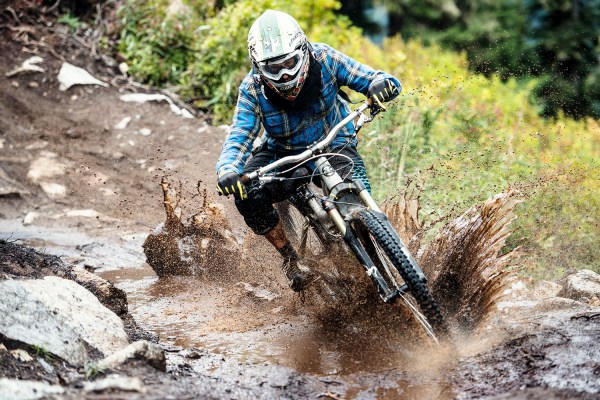
Tom Ford flying through a puddle. Stevens Pass, Washington.

Josh Hummel blowing up a wave of powder with a sun halo behind. White Pass Ski Area, Washington.
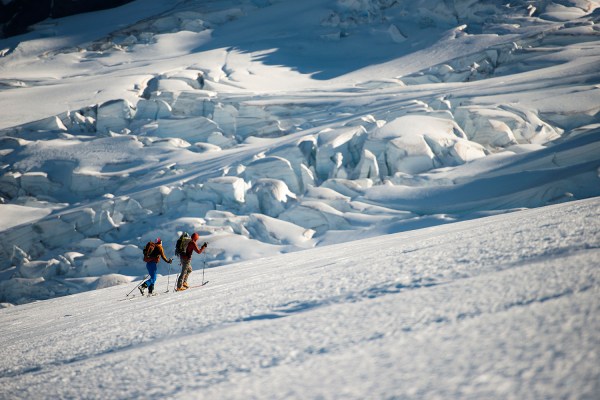
Louie Dawson and Kirk Turner skiing up the Coleman Deming Route. Mount Baker, Washington.
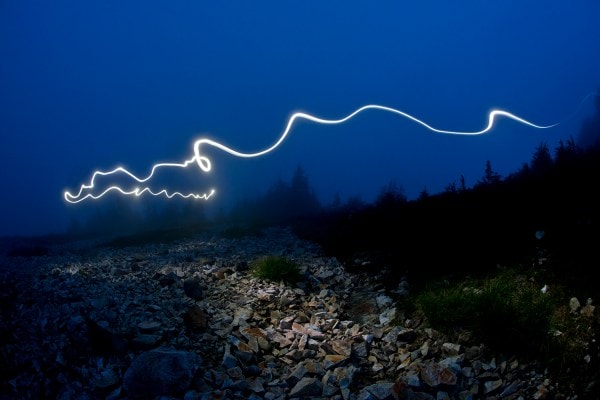
Adam Roberts in a minute-long exposure where only his headlamp is visible. Ruth Mountain, Washington.
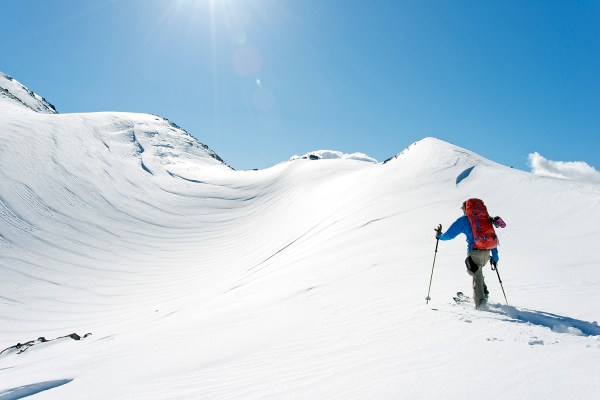
Kyle Miller enjoying the sunlight after more than a day in the clouds. Mount Rainier, Washington.

Stars and the slightly colored city lights washing Willis Wall and Liberty Ridge, two notorious routes on Rainier’s northern flanks. Mount Rainier National Park, Washington.
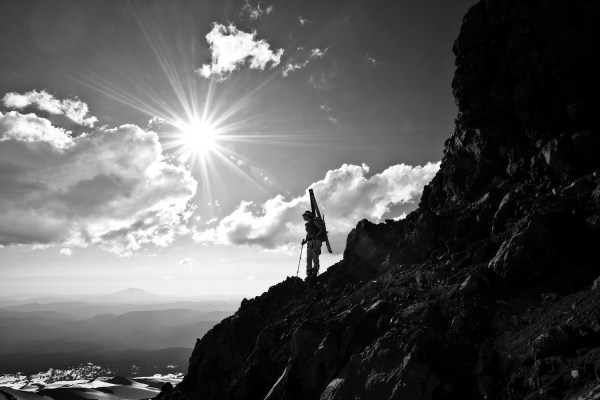
Hannah Carrigan pauses midway down Stormy Thursday as she navigates her way across ledges back to snow. Mount Adams Wilderness, Washington.
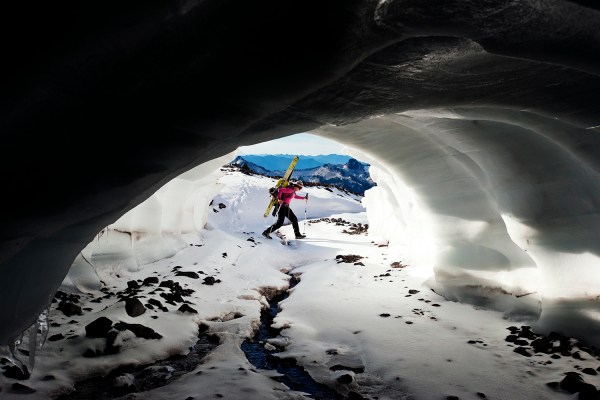
Hannah Carrigan crosses a stream flowing from an ice cave. Mount Rainier National Park, Washington.
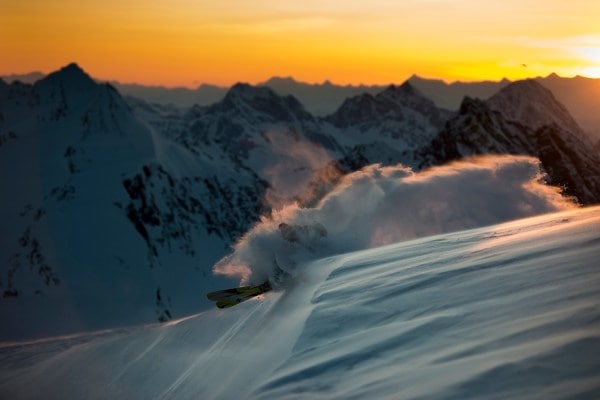
Zack Giffin and beautiful sunset turns splashing over a cornice. Valdez Mountains, Alaska.

Scott McAllister making the first descent of a steep flank on Columbia Peak. Monte Cristo, Washington.
